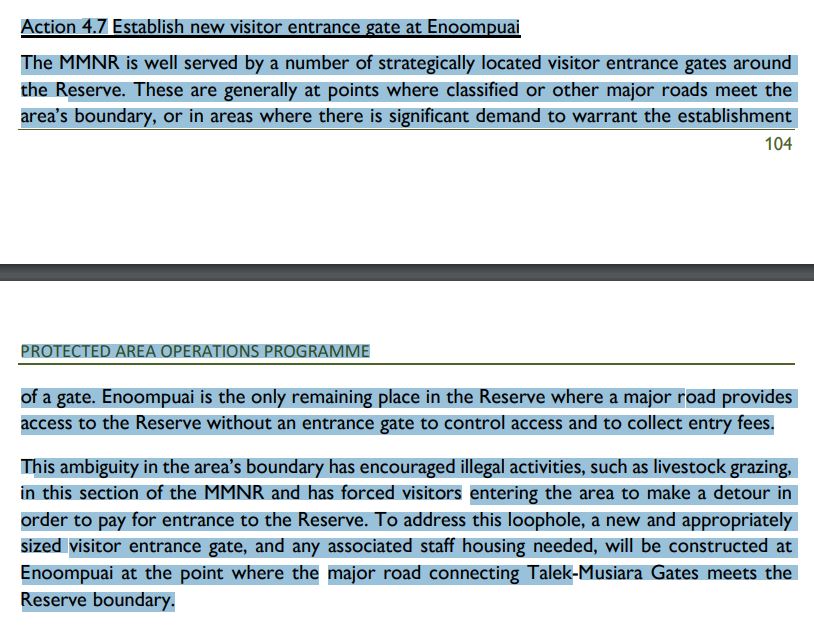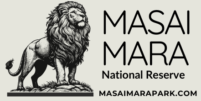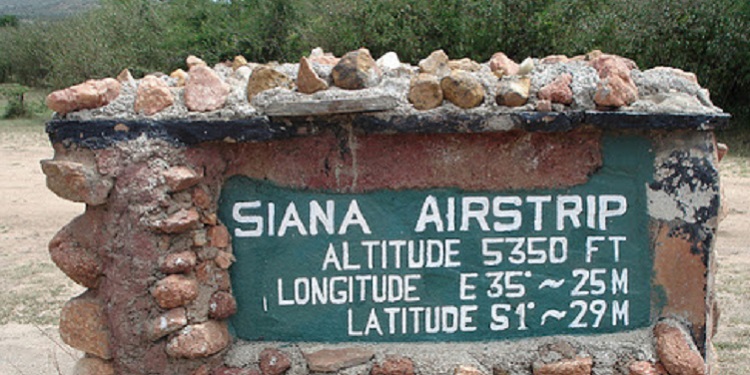Masai Mara National Reserve, a vast and renowned wildlife sanctuary in Kenya, spans over 1,510 square kilometers. Given its extensive area, there are several entry gates to access the reserve. Choosing the correct gate for your trip can save you hours of driving, ensuring a more enjoyable and efficient visit. Below is detailed information about the main entry gates, how to reach them from Nairobi, travel times, and other essential details for planning your visit to Masai Mara.
Entry and Exit Timings
- Entry Timing: 6:00 AM
- Exit Timing: 6:00 PM
- Note: Entry or exit beyond these timings is only possible with special permission from the reserve Warden, typically in cases of vehicle breakdowns or adverse weather conditions.
Main Entry Gates
1. Sekenani Gate
Route from Nairobi:
- Take the A104 highway from Nairobi towards Nakuru.
- At the Mai Mahiu junction, branch off onto B3 towards Narok.
- From Narok, take the C12 road which leads directly to Sekenani Gate.
Travel Time: Approximately 5-6 hours from Nairobi. The road from Narok to Sekenani is partially unpaved and can be rough.
Nearby Lodging Options:
- Mara Sarova Game Camp
- Keekorok Lodge
- Mara Sweet Acacia Lodge
- Mara Springs Safari Camp
- Enkolong Tented Camp
- Kimana Mara Tented Camp
- Oldarpoi Mara Camp
- Sekenani Camp
- AA Lodge Maasai Mara
- Kambu Mara Camp
This is the Closest Gate to Nairobi: Sekenani Gate
The Sekenani Gate is the closest entry point to Nairobi for accessing the Masai Mara National Reserve. It is the main and most preferred gate due to its proximity and the direct route from Nairobi.
2. Talek Gate
Route from Nairobi:
- Take the A104 highway from Nairobi towards Nakuru.
- At the Mai Mahiu junction, branch off onto B3 towards Narok.
- From Narok, take the C12 road to Sekenani.
- From Sekenani, follow the C12 road to Talek Gate.
Travel Time: Approximately 6 hours from Nairobi. Roads from Narok to Talek are mostly unpaved and can be rough.
Nearby Lodging Options:
- Mara Intrepids Tented Camp
- Julia’s River Camp
- Aruba Mara Camp
- Tipilikwani Mara Camp
- Mara Leisure Camp
- Fig Tree Camp
- Azure Mara Haven
- Mara Simba Lodge
- Mara Serena Safari Lodge
3. Musiara Gate
Route from Nairobi:
- Take the A104 highway from Nairobi towards Nakuru.
- At the Mai Mahiu junction, branch off onto B3 towards Narok.
- From Narok, take the C12 road to Sekenani.
- From Sekenani, continue on the C12 and then take the C13 to reach Musiara Gate.
Travel Time: Approximately 7-8 hours from Nairobi. Roads from Narok to Musiara are mostly unpaved and can be rough.
Nearby Lodging Options:
- Little Governors Camp
- Governors Camp
- Governors’ IL Moran Camp
- Kandili Camps
- Angama Mara
- Karen Blixen Camp
- Kilima Camp
- Nyota Mara Camp
4. Oloololo Gate (Mara Conservancy)
Route from Nairobi:
- Take the A104 highway from Nairobi towards Nakuru.
- At the Mai Mahiu junction, branch off onto B3 towards Narok.
- From Narok, take the C13 road through Aitong.
- Follow the C13 road to Oloololo Gate.
Travel Time: Approximately 7-8 hours from Nairobi. Roads from Narok to Oloololo are mostly unpaved and can be rough.
Nearby Lodging Options:
- Mara Big Five Lodge
- Fairmont Mara Safari Club
- Entim Mara Camp
- Oltome Mara Magic Resort
5. Oloolaimutia Gate
Route from Nairobi:
- Take the A104 highway from Nairobi towards Nakuru.
- At the Mai Mahiu junction, branch off onto B3 towards Narok.
- From Narok, take the C12 road to Sekenani.
- From Sekenani, follow the C12 road to Oloolaimutia Gate.
Travel Time: Approximately 6 hours from Nairobi. Roads from Narok to Oloolaimutia are mostly unpaved and can be rough.
Nearby Lodging Options:
- Ol Moran Tented Camp
- Mara Sidai Camp
- Acacia Camp Mara
6. Sand River Gate (Closed)
Route from Nairobi:
- Take the A104 highway from Nairobi towards Nakuru.
- At the Mai Mahiu junction, branch off onto B3 towards Narok.
- From Narok, take the C12 road to Sekenani.
- From Sekenani, follow the C12 road towards Talek and then head south towards Sand River Gate.
Travel Time: Approximately 7-8 hours from Nairobi. Roads from Narok to Sand River are mostly unpaved and can be rough.
Note: Due to the nearby border between Kenya and Tanzania being closed to tourists, this gate is seldom used, with most using the Isebania border instead.
Proposed New Gate: Enoompuai
The Masai Mara National Reserve (MMNR) management plan has identified the need for a new visitor entrance gate at Enoompuai as part of Action 4.7 in the Protected Area Operations Programme. This proposal addresses the absence of an official gate at a crucial access point where a major road meets the reserve’s boundary. The Enoompuai area has experienced challenges such as illegal livestock grazing and unauthorized entry due to the lack of controlled access.

Strategic Importance
Enoompuai is strategically located at the junction of the Talek-Musiara road, making it a significant entry point for visitors traveling from these popular regions within the reserve. The establishment of a gate here will streamline entry procedures, reduce unauthorized access, and enhance revenue collection by ensuring all visitors pay the required entry fees.
Benefits of the New Gate
- Improved Regulation: The new gate will provide a controlled entry point, helping to prevent illegal activities and ensuring that all visitors comply with park regulations.
- Enhanced Revenue Collection: By establishing an official entry point, the MMNR can ensure that all visitors pay the necessary entrance fees, contributing to the reserve’s maintenance and conservation efforts.
- Visitor Convenience: The gate will offer a more direct route for visitors, eliminating the need for detours and making it easier for tourists to access the reserve.
- Support for Conservation Efforts: By controlling access and reducing illegal activities, the gate will play a crucial role in protecting the reserve’s wildlife and natural resources.
Infrastructure and Staffing
The plan includes the construction of the gate itself, along with associated infrastructure such as staff housing. This will ensure that the gate is adequately staffed and managed, providing a seamless experience for visitors and maintaining high standards of operation.
Why is Sand River Gate Closed?
The Sand River Gate at the Masai Mara National Reserve is currently closed due to its proximity to the Kenya-Tanzania border, which is not open to tourists. This gate, located on the northern banks of the Sand River near the southern border of the Masai Mara, is close to the Bologonja Gate that leads into Serengeti National Park in Tanzania. However, the border between Kenya and Tanzania at this location is closed to tourist traffic, making the Sand River Gate largely redundant for visitor entry and exit.
Key Reasons for Closure:
- Proximity to Closed Border: The primary reason for the closure of Sand River Gate is its location near a border crossing that is not open to tourists. Without the ability to cross into Tanzania, the gate’s utility is significantly diminished.
- Low Usage: Due to the border closure, there is minimal traffic through this gate, leading to its underutilization. Most visitors prefer to use the Isebania border crossing, which remains open for travel between Kenya and Tanzania.
- Management and Control: Keeping the gate closed helps the reserve management maintain better control over entry and exit points, reducing the risk of unauthorized access and ensuring better regulation of tourist activities within the reserve.
Alternative Routes: Visitors aiming to access the Masai Mara National Reserve from Tanzania typically use the Isebania border crossing, which is open and facilitates travel between the two countries. This route is more practical and ensures compliance with both Kenyan and Tanzanian regulations.
In summary, the closure of the Sand River Gate is primarily due to its impracticality given the closed border at its location, leading to its underuse and the need for better management of entry points into the reserve.
Frequently Asked Questions about Masai Mara Entry Gates
1. What are the opening and closing times for the Masai Mara entry gates?
Answer: The entry gates to Masai Mara National Reserve open at 6:00 AM and close at 6:00 PM. Entry or exit beyond these hours is possible only with special permission from the reserve Warden, usually in cases of vehicle breakdowns or adverse weather conditions.
2. Can I pay entry fees at the gate, or do I need to book in advance?
Answer: Entry fees can be paid at the gate; however, it is recommended to book and pay in advance, especially during peak seasons, to avoid delays and ensure a smoother entry process.
3. Are there facilities available at the entry gates?
Answer: Most entry gates, including Sekenani and Talek, have basic facilities such as restrooms and information desks. Some gates also have small shops where you can purchase snacks and drinks.
4. Is it safe to travel to the gates on my own, or should I hire a guide?
Answer: While it is generally safe to travel to the gates on your own, hiring a guide or joining a tour group can enhance your experience by providing local knowledge, ensuring you don’t get lost, and helping you navigate the sometimes rough and unpaved roads.
5. Which gate should I use if I am staying at a specific lodge or camp?
Answer: The best gate to use depends on the location of your lodge or camp. For example:
- Sekenani Gate is ideal for lodges such as Mara Sarova Game Camp and Keekorok Lodge.
- Talek Gate serves camps like Mara Intrepids and Mara Serena Safari Lodge.
- Musiara Gate is close to Governors Camp and Little Governors Camp. Check with your accommodation for the most convenient entry gate.
6. Are there any medical facilities near the entry gates?
Answer: Basic medical facilities and first aid services are available at some entry gates. For more comprehensive medical care, it is recommended to visit health centers in nearby towns like Narok.
7. Do the gates provide maps and guides for visitors?
Answer: Unfortunately no. I have been told that they used to provide them in the past but it does not seem that the county has not allocated a budget for production of free resources such as map to give to visitors of the reserve.
8. Can I use any entry gate to exit the reserve, or do I have to exit through the same gate I entered?
Answer: You can exit through any gate, regardless of where you entered. However, it’s essential to keep track of your entry and exit times to comply with the reserve’s regulations.
9. What should I do if I encounter wildlife near the entry gates?
Answer: If you encounter wildlife near the entry gates, maintain a safe distance, stay inside your vehicle, and avoid making loud noises. Always follow the instructions of park rangers and guides.
10. Are the roads leading to the gates well marked?
Answer: Major roads leading to the entry gates are generally well marked. However, some sections, especially those that are unpaved, may have fewer signs. Using a GPS or map is recommended for first-time visitors.
11. Is it possible to enter the Masai Mara National Reserve without using one of the designated gates?
Answer: No, it is not permitted to enter the reserve without passing through one of the designated gates. Doing so would be illegal and could result in penalties. The gates are established to regulate access and ensure all visitors pay the required entry fees.
12. Can I buy park permits at the gate?
Answer: Yes, you can buy park permits at the entry gates. However, it is recommended to purchase them in advance online or through a travel agent to avoid any inconvenience, especially during peak seasons when queues can be long.
13. Are there any restrictions on the types of vehicles allowed to enter the reserve?
Answer: While most vehicles are allowed to enter the reserve, 4×4 vehicles are highly recommended due to the rough and sometimes muddy terrain, especially during the rainy season. Standard sedans or low-clearance vehicles may struggle on these roads.
14. Are entry gates staffed 24/7 for emergencies?
Answer: While the gates are not open 24/7, there are often rangers and staff on duty around the clock for emergencies. If you encounter an issue outside of the normal operating hours, you should be able to find assistance.
15. Do the entry gates accept credit card payments?
Answer: Yes, most entry gates accept credit card payments. However, it is always a good idea to carry some cash in Kenyan Shillings in case of any technical issues with card machines.
16. Are there any cultural sites near the entry gates?
Answer: Yes, some gates are near cultural sites and Maasai villages where you can experience local culture, traditions, and buy handmade crafts. The Sekenani Gate, for instance, is near several Maasai villages.
17. What should I do if I arrive at the gate after closing time?
Answer: If you arrive after closing time, you will not be allowed to enter without prior permission. It is advisable to plan your travel to ensure you arrive within the operating hours. If you are delayed, contact the reserve warden for assistance.
18. Is there cell phone coverage at the entry gates?
Answer: Cell phone coverage varies by location. Some gates have good coverage while others, especially those in more remote areas, may have limited or no signal. It is best to inform your lodge or camp of your estimated arrival time in case of connectivity issues.
19. Can I find fuel stations near the entry gates?
Answer: There are no fuel stations within the reserve, but you can find them in nearby towns such as Narok. Ensure your vehicle has enough fuel for your entire trip into and out of the reserve.
20. Are there any specific entry requirements or documents needed?
Answer: Visitors are required to present a valid park entry permit. It is also advisable to carry identification documents such as a passport or national ID. For international tourists, a valid visa for Kenya is required.
21. What are the health and safety protocols at the entry gates?
Answer: Health and safety protocols, including COVID-19 measures, are in place. Visitors may be required to undergo temperature checks, wear masks, and maintain social distancing. Hand sanitizing stations are also available at the gates.
22. Can I camp near the entry gates?
Answer: There are designated camping sites within the reserve, but not directly at the entry gates. It is recommended to book in advance and inquire about the nearest camping facilities to your chosen gate.
23. Are there any special considerations for self-drive visitors?
Answer: Self-drive visitors should ensure they have a reliable vehicle, a good map or GPS, and sufficient supplies including water, snacks, and a first-aid kit. It is also important to familiarize yourself with the reserve’s rules and regulations.
24. Can I exit through a different gate from the one I entered?
Answer: Yes, you can exit through a different gate. This flexibility allows for a more comprehensive exploration of the reserve. Just ensure your entry and exit times are logged correctly to avoid any issues.
25. Are the roads to the entry gates maintained year-round?
Answer: While efforts are made to maintain the roads, they can become challenging, especially during the rainy season. It is advisable to check the road conditions in advance and consider a 4×4 vehicle for better traction.

